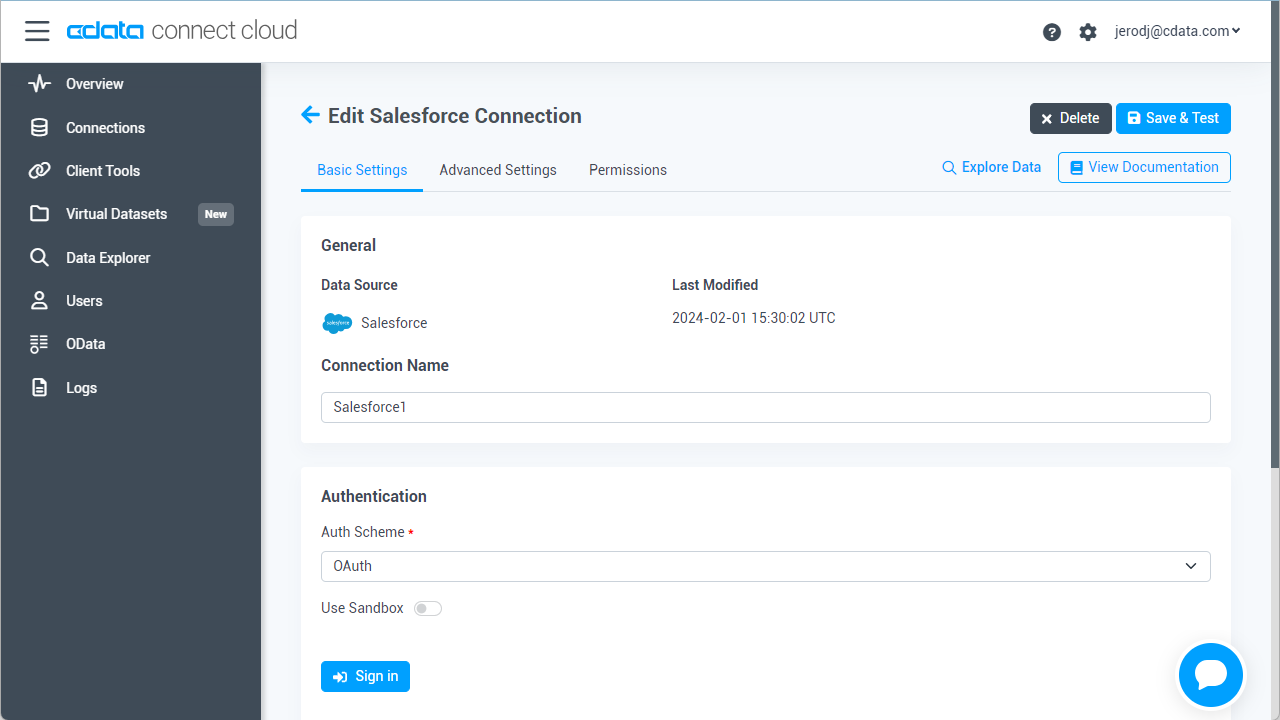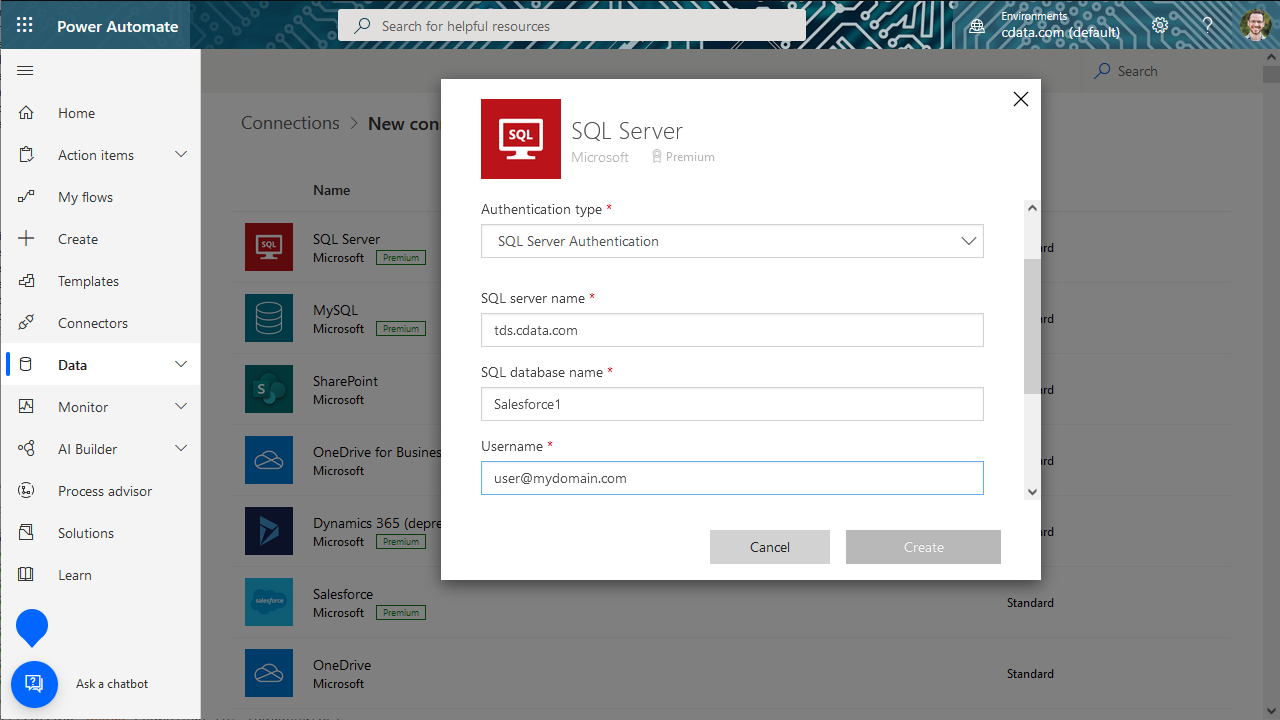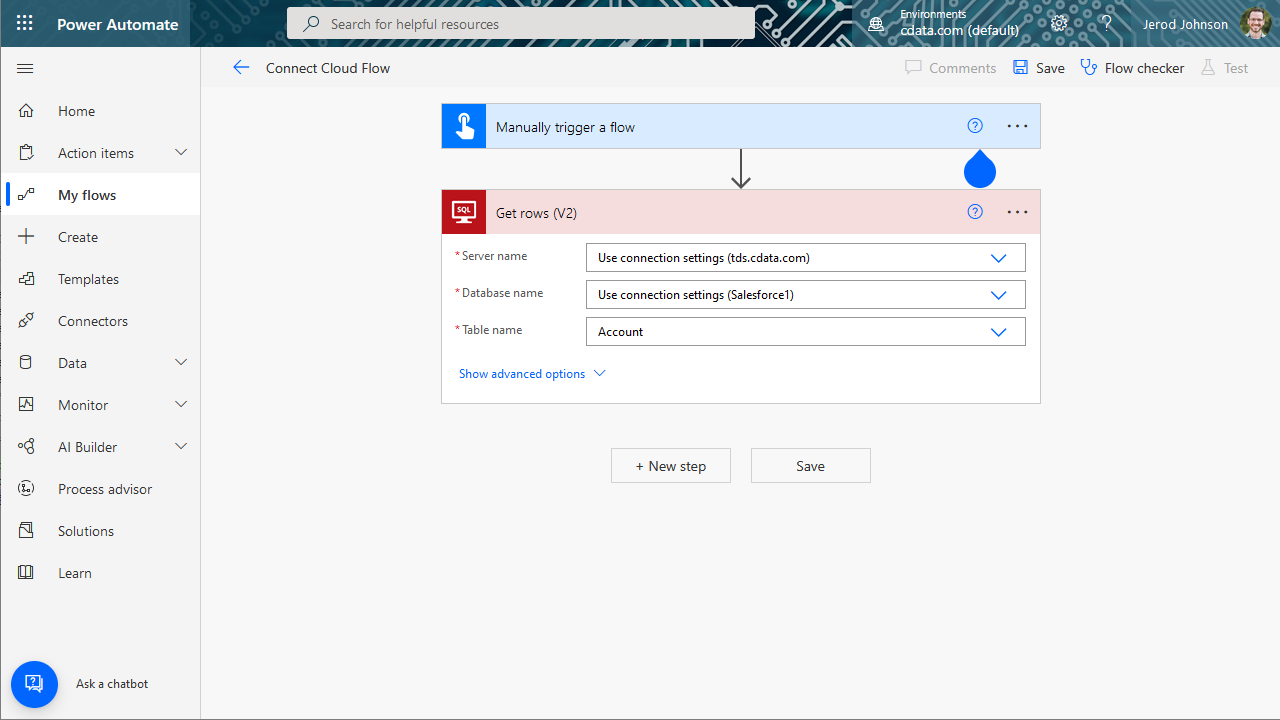Model Context Protocol (MCP) finally gives AI models a way to access the business data needed to make them really useful at work. CData MCP Servers have the depth and performance to make sure AI has access to all of the answers.
Try them now for free →Integrate QuickBooks Online Data into Automated Tasks with Power Automate
Use CData Connect Cloud to connect to QuickBooks Online data and integrate live QuickBooks Online data into your Power Automate tasks.
Microsoft Power Automate is an online service that automates events (known as workflows) across the most common apps and services. When paired with CData Connect Cloud, you get instant, cloud-to-cloud access to QuickBooks Online data for visualizations, dashboards, and more. This article shows how to connect to Connect Cloud from Power Automate and integrate live QuickBooks Online data into your workflows and tasks.
CData Connect Cloud provides a pure SQL, cloud-to-cloud interface for QuickBooks Online, allowing you to easily integrate with live QuickBooks Online data in Power Automate — without replicating the data. CData Connect Cloud looks exactly like a SQL Server database to Power Automate and uses optimized data processing out of the box to push all supported SQL operations (filters, JOINs, etc) directly to QuickBooks Online, leveraging server-side processing to quickly return QuickBooks Online data.
About QuickBooks Online Data Integration
CData provides the easiest way to access and integrate live data from QuickBooks Online. Customers use CData connectivity to:
- Realize high-performance data reads thanks to push-down query optimization for complex operations like filters and aggregations.
- Read, write, update, and delete QuickBooks Online data.
- Run reports, download attachments, and send or void invoices directly from code using SQL stored procedures.
- Connect securely using OAuth and modern cryptography, including TLS 1.2, SHA-256, and ECC.
Many users access live QuickBooks Online data from preferred analytics tools like Power BI and Excel, directly from databases with federated access, and use CData solutions to easily integrate QuickBooks Online data with automated workflows for business-to-business communications.
For more information on how customers are solving problems with CData's QuickBooks Online solutions, refer to our blog: https://www.cdata.com/blog/360-view-of-your-customers.
Getting Started
Configure QuickBooks Online Connectivity for Power Automate
Connectivity to QuickBooks Online from Power Automate is made possible through CData Connect Cloud. To work with QuickBooks Online data from Power Automate, we start by creating and configuring a QuickBooks Online connection.
- Log into Connect Cloud, click Connections and click Add Connection
![Adding a Connection]()
- Select "QuickBooks Online" from the Add Connection panel
![Selecting a data source]()
-
QuickBooks Online uses OAuth to authenticate. Click "Sign in" to authenticate with QuickBooks Online.
![Authenticating with OAuth (Salesforce is shown).]()
- Navigate to the Permissions tab in the Add QuickBooks Online Connection page and update the User-based permissions.
![Updating permissions]()
Add a Personal Access Token
If you are connecting from a service, application, platform, or framework that does not support OAuth authentication, you can create a Personal Access Token (PAT) to use for authentication. Best practices would dictate that you create a separate PAT for each service, to maintain granularity of access.
- Click on your username at the top right of the Connect Cloud app and click User Profile.
- On the User Profile page, scroll down to the Personal Access Tokens section and click Create PAT.
- Give your PAT a name and click Create.
![Creating a new PAT]()
- The personal access token is only visible at creation, so be sure to copy it and store it securely for future use.
With the connection configured, you are ready to connect to QuickBooks Online data from Power Automate.
Connecting to CData Connect Cloud
To use Connect Cloud to integrate QuickBooks Online data into your Power Automate tasks, you need a new SQL Server connection:
- Log in to Power Automate
- Click Data -> Connections -> New connection
- Select SQL Server
![Creating a new SQL Server Connection]()
- In the connection wizard:
- Choose to connect directly
- Set SQL server name to tds.cdata.com
- Set SQL database name to the name of the QuickBooks Online connection (e.g. QuickBooksOnline1)
- Set Username to a Connect Cloud user (e.g. user@mydomain.com)
- Set Password to the PAT for the above user
- Click Create
![Connecting to Connect Cloud]()
Integrating QuickBooks Online Data into Power Automate Tasks
With the connection to Connect Cloud configured, you are ready to integrate live QuickBooks Online data into your Power Automate tasks.
- Log in to Power Automate
- Click My flows -> New flow and choose to create the flow from blank or template
- Add (or configure) a SQL Server action (like Get rows) and configure the action to connect to your Connect Cloud connection
- Select a Table to work with (from the drop-down menu) and configure any advanced options (like filters, orders, etc)
![Getting QuickBooks Online "Rows"]()
- Configure any actions to follow and test, then save the flow
SQL Access to QuickBooks Online Data from Cloud Applications
Now you have a direct connection to live QuickBooks Online data from Power Automate tasks. You can create more connections and workflows to drive business — all without replicating QuickBooks Online data.
To get SQL data access to 100+ SaaS, Big Data, and NoSQL sources directly from your cloud applications, sign up for a free trial of CData Connect Cloud.
Related Power Automate Articles
This article walks through using CData Connect Cloud with Power Automate (Online). Check out our other articles for more ways to work with Power Automate Desktop:









